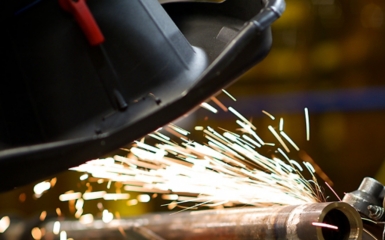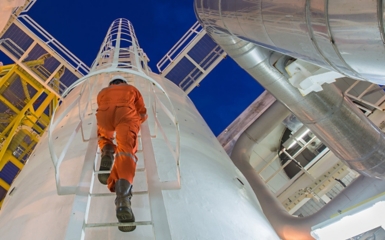Vapor recovery Units (VRUs) play a crucial role in the oil and gas industry by helping to capture and reclaim vapors that would otherwise be released into the atmosphere.
The Basics of Vapor Recovery Units
Before delving into the intricacies of how VRUs work, it’s essential to understand their fundamental purpose. VRUs are designed to recover and recycle volatile vapors generated during various processes in the oil and gas industry, such as truck loading operations. These vapors typically contain hydrocarbons and are harmful to the environment.
Components of a Vapor Recovery Unit
A typical VRU consists of several key components, each with a specific role in the vapor recovery process. Let’s break down these components:
- Vapor Collection System: Just like in vapor combustion units, the process starts with the vapor collection system. Vapors from a truck loading operation, for example, are collected using a vapor collection system. This system ensures that the vapors are safely gathered and prepared for the recovery process.
- Carbon Adsorption System: The heart of a VRU is the carbon adsorption system, specifically an AD-AB (Carbon Adsorption / Absorption) system. This system utilizes activated carbon, often in the form of small pellets, to capture the hydrocarbons present in the vapors.
- Staging Skid: The staging skid is responsible for isolating the two vessels within the carbon adsorption system. One vessel collects vapors, while the other undergoes the desorption process to clean the carbon.
- Vacuum System: To clean the carbon and make it reusable, a vacuum system is employed. It desorbs or removes the hydrocarbons from the carbon, restoring it to a working state.
How VRUs Work
The operation of a VRU involves a combination of adsorption and desorption processes. Here’s how it works:
- Adsorption: Vapors from the vapor collection system enter the carbon adsorption system, specifically one of the vessels. As the vapors pass through the vessel, the activated carbon captures the hydrocarbons, effectively cleaning the air. The cleaned air is then released through a vent stack.
- Desorption/Regeneration: When one vessel reaches its capacity, indicating that the carbon is saturated with hydrocarbons, the desorption process begins. A vacuum system is used to desorb or remove the hydrocarbons from the carbon, making it ready for reuse. This process ensures that the VRU can continuously operate over an extended period.
- Hydrocarbon Recovery: After desorption, the hydrocarbons collected from the carbon are sent to an absorber, typically a packed tower. In this tower, the recovered hydrocarbons are introduced alongside active liquid (often the product being loaded) to promote absorption back into the liquid stream.
- Return to the Tank: The recovered hydrocarbons are then returned to the tank from which they originated, ensuring that they rejoin the product stream.
Advantages of a Vapor Recovery Unit
Investing in a VRU offers a range of significant advantages for industries involved in VOC emissions management and crude oil vapor control:
- Environmental Compliance: VRUs help maintain compliance with environmental regulations. They capture and control VOC emissions effectively, reducing the release of harmful pollutants into the atmosphere.
- Cost Savings: By recovering valuable hydrocarbons that would otherwise be lost, VRUs can contribute to cost savings and revenue generation.
- Emission Control Efficiency: VRUs provide industry-leading emission control efficiency, often reaching 99% or higher. This helps companies meet stringent emission reduction targets.
- Safe Operation: VRUs can be installed in hazardous areas and require no open flames or vapor conditioning during marine loading, ensuring safety in various operational environments.
Considerations
While VRUs are highly effective in recovering hydrocarbons and reducing emissions, there are some considerations to keep in mind:
- Tank Volume: The size of the tank plays a crucial role in VRU operation. Larger tanks provide a more significant source of lower saturation material, allowing for efficient vapor recovery. Smaller tanks may require additional measures to ensure proper vapor recovery.
- Vapor Pressure: High vapor pressure in the tank can impact the efficiency of the VRU. Cooling measures can be employed to mitigate the effects of added heat from the VRU system.
- Flexibility: VRUs are versatile but require careful planning to ensure flexibility in the face of changing operational conditions, tank volumes, and product types.
The most advanced vapor recovery technology, customized to meet your needs.
John Zink’s Vapor Recovery Units excel in emissions control, consistently achieving 99% efficiency in typical installations such as truck, rail, tank, and marine loading. We also offer solutions to meet stringent emissions standards, including TA Luft I, and can customize engineering evaluations to meet TA Luft II standards. Discover how our VRUs can transform your emissions management and efficiency.



